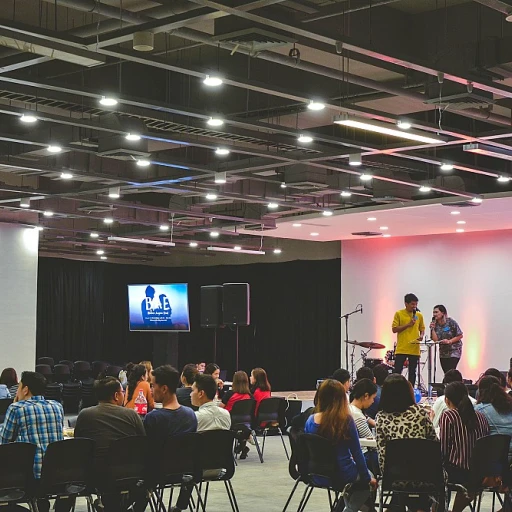
Understanding the remote talent landscape
The Shift to Remote Work and Its Impact on Talent Sourcing
Remote work has changed the way companies approach hiring and recruitment. The rise of remote jobs means organizations are no longer limited by geography when searching for top talent. This shift opens up access to a much larger talent pool, but it also brings new challenges for recruiters and hiring managers. Understanding these changes is the first step to building an effective remote recruiting strategy.
Key Trends in the Remote Talent Market
- Global competition: Companies now compete for candidates worldwide, making it essential to stand out with a strong employer brand and clear job postings.
- Flexible work expectations: Many job seekers prioritize flexibility, so remote jobs are highly attractive. This trend pushes employers to rethink their recruitment process and employee value proposition.
- Technology-driven sourcing: Digital tools and platforms have become central to sourcing and engaging remote candidates. Social media, job boards, and specialized sourcing tools help recruiters connect with remote workers efficiently.
Why Remote Sourcing Requires a New Approach
Remote recruiting is not just about posting jobs online. It requires a deeper understanding of what makes remote employees successful. Companies must evaluate not only technical skills but also a candidate’s ability to work independently and communicate effectively across digital channels. The recruitment process must adapt to assess these qualities and ensure a good fit for remote roles.
Building an effective remote hiring process also means addressing unique challenges, such as time zone differences, cultural fit, and remote onboarding. For more insights on managing people in candidate sourcing, explore these effective strategies for managing people in candidate sourcing.
As remote work continues to grow, companies that invest in understanding the remote talent landscape will be better positioned to attract and retain top talent for their remote jobs.
Defining role requirements for remote positions
Clarifying What Makes a Remote Role Unique
Before diving into remote recruiting, it’s crucial to define exactly what your company needs from remote employees. Remote jobs aren’t just traditional roles done from home. They require a unique blend of skills, tools, and expectations. This step helps ensure the recruitment process is targeted and effective, setting up both the company and candidates for success.
Identifying Core Skills and Competencies
Remote work demands more than technical expertise. Top talent for remote roles must demonstrate:
- Self-motivation and discipline – Remote workers need to manage their time and productivity without direct supervision.
- Strong communication skills – Clear, proactive communication is essential for remote teams, especially when collaborating across time zones.
- Tech-savviness – Familiarity with digital tools for collaboration, project management, and communication is a must.
- Adaptability – Remote jobs often require flexibility and the ability to handle change.
Defining these requirements up front helps filter candidates who are not just qualified, but also ready for remote work.
Crafting Effective Remote Job Descriptions
Job postings are your first touchpoint with potential remote talent. Make sure your job descriptions:
- Clearly state that the position is remote or hybrid
- Outline the specific responsibilities and deliverables
- Highlight the tools and platforms your team uses
- Describe your company’s approach to remote work and team culture
- List required skills, including soft skills like communication and self-management
Transparent job postings help attract job seekers who are genuinely interested in remote roles and align with your company’s values.
Aligning Role Requirements with Company Goals
Remote hiring is most effective when role requirements support broader business objectives. Consider how each remote position fits into your team and company strategy. This alignment helps build a talent pool that not only meets immediate needs but also supports long-term growth.
For more on defining specialized requirements, especially in high-stakes sectors, check out this guide on effective strategies for staffing cybersecurity roles in banking. The principles of clear requirements and targeted sourcing apply across industries.
Leveraging digital platforms for sourcing
Choosing the Right Platforms for Remote Talent
Finding top talent for remote jobs means going beyond traditional job boards. The digital landscape is full of platforms designed to connect companies with remote workers. Selecting the right channels can make your remote recruiting process more effective and help you reach a wider talent pool.
- Remote-specific job boards: Platforms like We Work Remotely, Remote.co, and FlexJobs focus on remote jobs, attracting job seekers who are already interested in remote work.
- General job boards with remote filters: Sites such as Indeed and LinkedIn allow you to filter for remote roles, expanding your reach to candidates who may not be searching exclusively for remote jobs.
- Freelance and gig platforms: Upwork and Toptal can be valuable for sourcing specialized remote talent, especially for project-based roles.
- Social media and professional networks: Leveraging social media platforms and online communities can help you engage passive candidates who may not be actively looking but are open to remote opportunities.
Optimizing Your Job Posting for Remote Roles
When recruiting for remote employees, your job posting should clearly communicate the remote nature of the position. Highlight remote work benefits, required skills, and expectations. This transparency helps attract candidates who are a good fit for your company’s remote culture.
- Use clear titles like “Remote Software Engineer” or “Remote Customer Support” to improve visibility.
- Describe the remote hiring process, including any virtual assessments or interviews.
- Emphasize your employer brand and commitment to remote work to stand out in a competitive talent acquisition market.
Utilizing Tools to Streamline Remote Recruitment
Digital tools can help make your remote recruitment process more efficient. Applicant tracking systems (ATS), video interviewing platforms, and automated scheduling tools are essential for managing remote candidates. These tools support collaboration among your hiring team and help maintain a smooth process from sourcing to onboarding.
Building a Diverse Remote Talent Pool
Remote jobs open up opportunities to connect with candidates from different locations and backgrounds. By leveraging global job boards and digital communities, you can build a diverse talent pool. This diversity can enhance your team’s creativity and problem-solving abilities, making your company more competitive in the remote work landscape.
For a deeper understanding of how to evaluate the effectiveness of your sourcing channels and measure the value of your recruitment process, check out this guide on valuation metrics for specialized recruiting agencies.
Engaging passive candidates remotely
Building Meaningful Connections with Remote Candidates
Engaging passive candidates for remote jobs requires a thoughtful approach. Unlike active job seekers, passive talent may not be looking for a new role but could be open to the right opportunity. In remote recruiting, making the first impression count is crucial, as digital communication is often the only touchpoint.
- Personalize outreach: Generic messages rarely attract top talent. Tailor your communication to highlight how the remote role aligns with the candidate’s skills, interests, and career goals. Mention specific aspects of your company’s remote work culture or team values that set you apart.
- Showcase your employer brand: Use social media, your careers page, and employee testimonials to illustrate what makes your remote jobs unique. Sharing stories from current remote employees can help job seekers visualize themselves as part of your team.
- Utilize digital tools: Leverage platforms like LinkedIn, niche job boards, and talent acquisition software to identify and connect with passive candidates. Tools that enable asynchronous communication, such as video introductions or recorded Q&A, can make the process more flexible for both sides.
Creating Engagement Beyond the Job Posting
Remote hiring is more than just posting a job and waiting for applications. To build a strong talent pool, recruiters need to nurture relationships over time. This means keeping candidates informed about your company’s mission, remote work policies, and future opportunities.
- Host virtual events: Webinars, online meetups, or Q&A sessions with remote team members can help candidates get to know your company and culture.
- Share valuable content: Regularly provide insights about remote work trends, skills development, and your recruitment process. This positions your company as a thought leader and keeps your employer brand top of mind.
- Follow up consistently: Even if a candidate isn’t ready to make a move, periodic check-ins can help maintain interest and trust. Use your applicant tracking system or CRM to schedule reminders and track interactions.
Adapting Your Approach for Remote Talent Acquisition
Remote recruitment demands flexibility and empathy. Candidates may be in different time zones or balancing other commitments. Respecting their schedules and preferences during the hiring process demonstrates your company’s commitment to remote work principles.
- Offer flexible interview options: Provide multiple time slots or asynchronous interview formats to accommodate remote workers’ availability.
- Communicate transparently: Clearly outline the steps in your hiring process, expected timelines, and what remote employees can expect from your team.
By focusing on authentic engagement and adapting your sourcing strategies, you can attract and retain top remote talent, strengthening your recruitment process and building a high-performing remote team.
Assessing remote readiness and cultural fit
Evaluating Skills for Remote Success
When recruiting for remote jobs, it’s not just about technical expertise. The hiring process must also focus on skills that make candidates effective in a distributed environment. Remote employees need to be self-motivated, organized, and comfortable with digital communication tools. Assessing these qualities can help ensure that new hires will thrive in remote roles and contribute positively to the company culture.
- Communication: Look for candidates who express themselves clearly in writing and during video calls. This is crucial for remote work, where most interactions happen online.
- Time Management: Ask about their strategies for managing tasks and deadlines without direct supervision. Effective remote workers can prioritize and deliver results independently.
- Tech Savvy: Familiarity with remote collaboration tools is a must. During the recruitment process, consider practical tests or questions about their experience with platforms like Slack, Zoom, or project management software.
Assessing Cultural Fit from a Distance
Remote recruiting makes it harder to gauge how a candidate will fit into your team’s culture. However, cultural alignment is still essential for long-term success. During interviews, discuss your company’s values and remote work expectations. Encourage candidates to share their preferred work styles and how they’ve adapted to remote jobs in the past. This helps both sides determine if there’s a strong match.
Some companies use virtual group interviews or invite candidates to join a team meeting as part of the hiring process. This gives job seekers a sense of the company’s remote culture and lets recruiters observe how candidates interact with potential colleagues.
Tools to Support Remote Readiness Assessment
There are digital tools that can help streamline the assessment of remote talent. Skills assessments, personality tests, and asynchronous video interviews can all provide valuable insights. These tools support a more objective recruitment process and help build a strong talent pool for remote roles.
Ultimately, effective remote recruitment means looking beyond resumes. By focusing on remote readiness and cultural fit, companies can attract and retain top talent who will excel in remote jobs and strengthen the employer brand.
Overcoming challenges in remote candidate sourcing
Common Obstacles in Remote Candidate Sourcing
Remote recruiting opens up access to a global talent pool, but it also brings unique challenges to the hiring process. Companies often struggle with identifying top talent, maintaining effective communication, and ensuring a smooth recruitment process for remote roles. Here are some of the main hurdles:
- Time zone differences: Coordinating interviews and assessments with candidates from various regions can slow down the hiring process and create scheduling headaches for both recruiters and job seekers.
- Verifying skills and experience: Without in-person meetings, it’s harder to assess whether candidates truly have the remote work skills and self-motivation needed for remote jobs.
- Building trust and engagement: Remote candidates may feel disconnected from the company culture, making it challenging to showcase your employer brand and keep top talent interested throughout the recruitment process.
- Technology barriers: Not all candidates are equally comfortable with the digital tools used for remote recruiting, such as video interviews or online assessments.
Strategies to Overcome Remote Sourcing Challenges
To build an effective remote recruitment process, companies need to adapt their sourcing and hiring strategies. Here are some practical ways to help your team overcome these obstacles:
- Standardize communication: Use clear, consistent messaging in job postings and throughout the recruitment process. Leverage social media and job boards to reach remote job seekers and keep them informed.
- Leverage the right tools: Invest in reliable video conferencing, assessment platforms, and collaboration tools to streamline remote hiring and make it easier for both recruiters and candidates.
- Assess remote readiness: Incorporate questions and assessments that evaluate a candidate’s ability to work independently, manage time, and communicate effectively in a remote environment.
- Promote your employer brand: Share stories, testimonials, and insights about remote employees and company culture to attract top talent and help candidates envision themselves as part of your remote team.
- Offer flexibility: Be mindful of time zones and personal commitments when scheduling interviews or onboarding sessions, showing respect for candidates’ needs and reinforcing your company’s commitment to remote work.
Continuous Improvement in Remote Recruitment
Remote recruitment is an evolving field. Regularly review your sourcing process, gather feedback from candidates and hiring managers, and adjust your strategies to stay competitive in attracting remote talent. By focusing on clear communication, the right tools, and a strong employer brand, companies can build a robust talent acquisition strategy for remote jobs and ensure long-term success in remote hiring.









